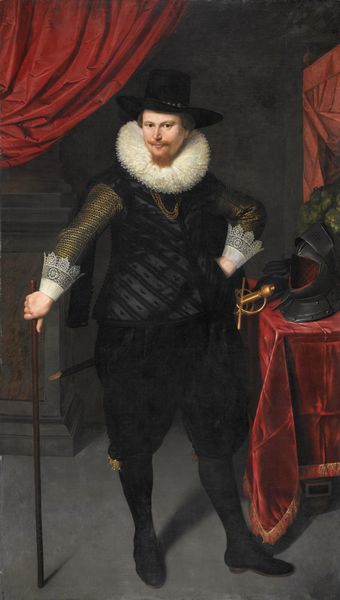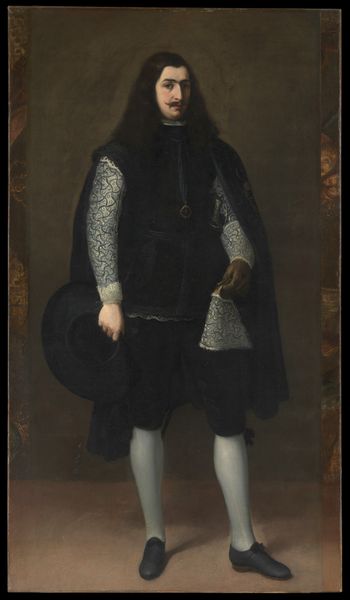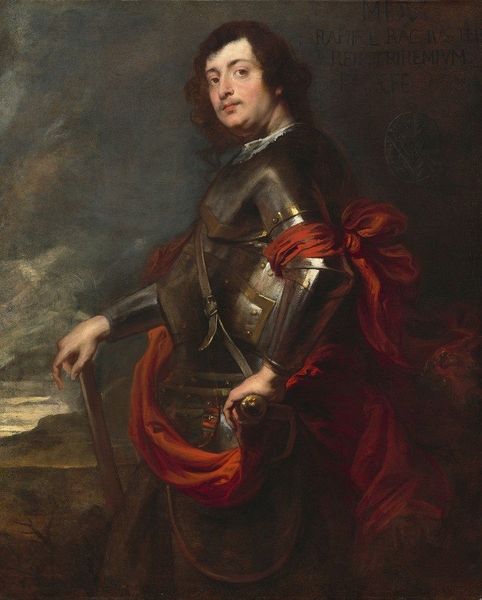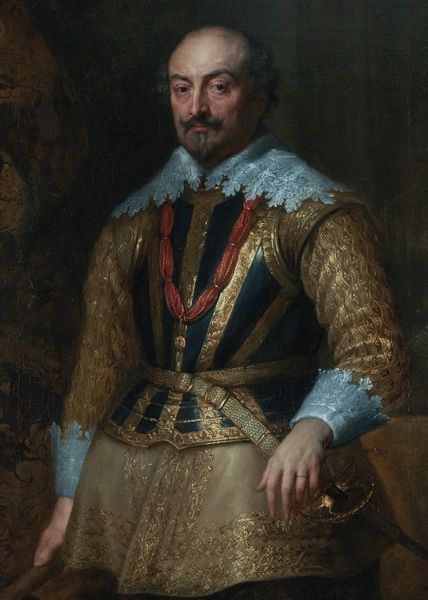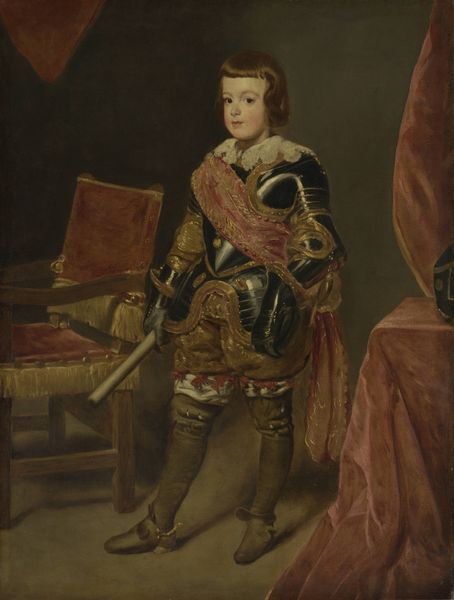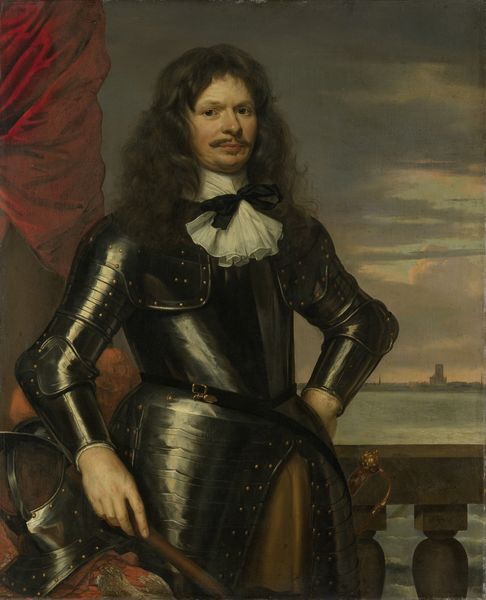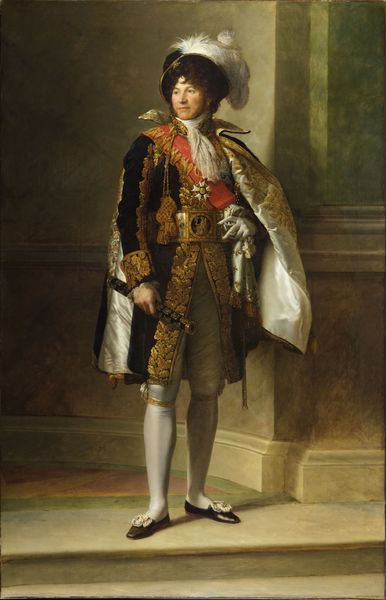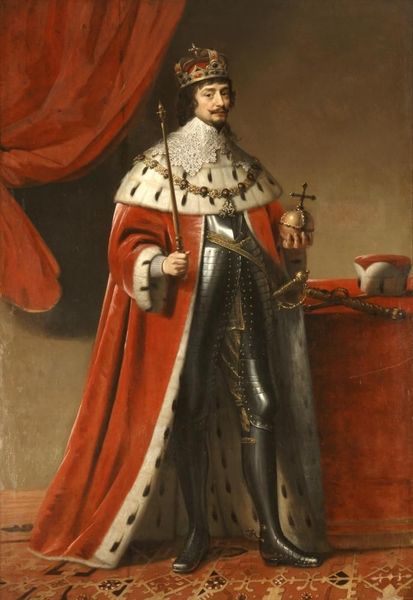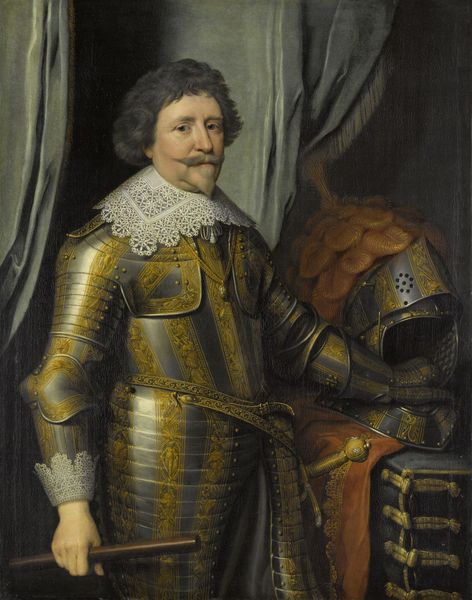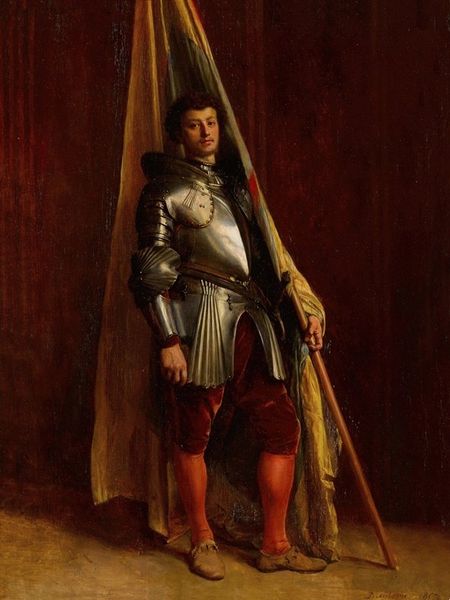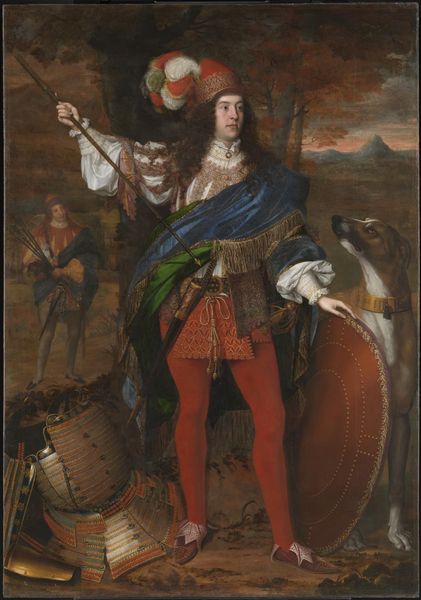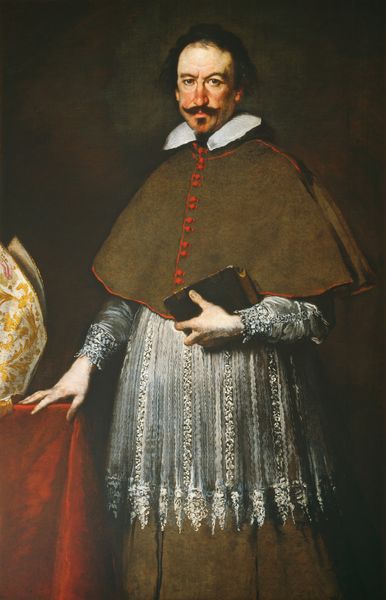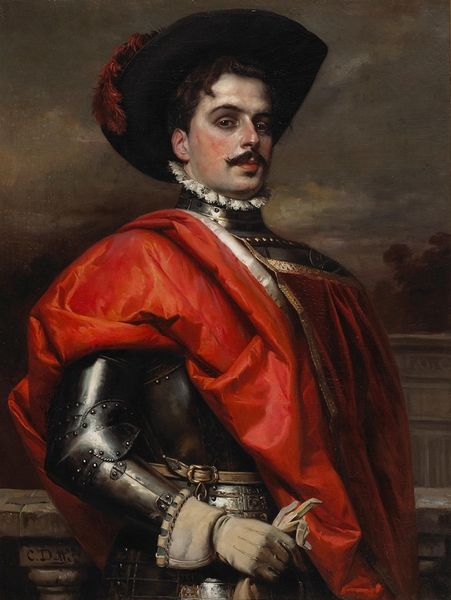
painting, oil-paint
#
portrait
#
baroque
#
painting
#
oil-paint
#
landscape
#
figuration
#
oil painting
#
history-painting
Dimensions: overall: 206.1 x 137.5 cm (81 1/8 x 54 1/8 in.) framed: 232.4 x 164.1 cm (91 1/2 x 64 5/8 in.)
Copyright: National Gallery of Art: CC0 1.0
Curator: We're now standing before a portrait of Lodovico Widmann, painted by Tiberio Tinelli around 1637. It exemplifies the opulence of the Baroque era. Editor: My immediate impression is one of slightly contrived nonchalance; he appears casually posed, yet his attire screams status and wealth. Curator: Precisely! Notice the meticulously rendered lace collar and cuffs, cascading with intricate detail. These are not mere decorative elements; they speak to the socio-economic stratification inherent in Baroque portraiture. Observe, too, how the light falls, emphasizing the folds and textures. Editor: Yes, and that's the materiality I'm drawn to – all that fabric! Who were the artisans, likely anonymous, who crafted these delicate materials? Their labor is embedded within the very texture of the image, contributing to Widmann's image as a gentleman of leisure. Curator: An intriguing point. Semiotically, his bearing is a carefully constructed performance of power and gentility. We must also acknowledge how the artist uses landscape and allegorical props to enrich the symbolism. Editor: Note how Tinelli juxtaposes the grand ruin with a detailed landscape, a man is standing off in the distance near it. The man-made crumbling facade set against nature’s permanence really underlines the fleeting nature of aristocratic power and legacy. Curator: Interesting reading. But ultimately, it is the artist’s manipulation of light and shadow and precise lines that sculpt form to imbue this figure with a self-aware, worldy attitude. Editor: I concur that, however carefully managed his performance, the physical object speaks to the historical and socio-economic processes of making in the seventeenth century, where craft traditions intersect with aristocratic wealth. Curator: Yes, the object exists within history. A truly engaging discussion that throws light upon Tiberio Tinelli’s skill and our interpretation of ‘Lodovico Widmann’.
Comments
No comments
Be the first to comment and join the conversation on the ultimate creative platform.
